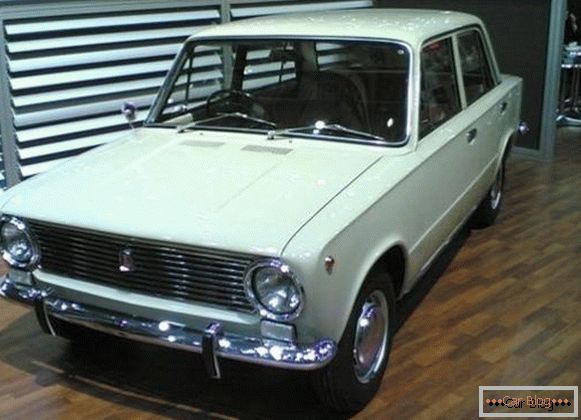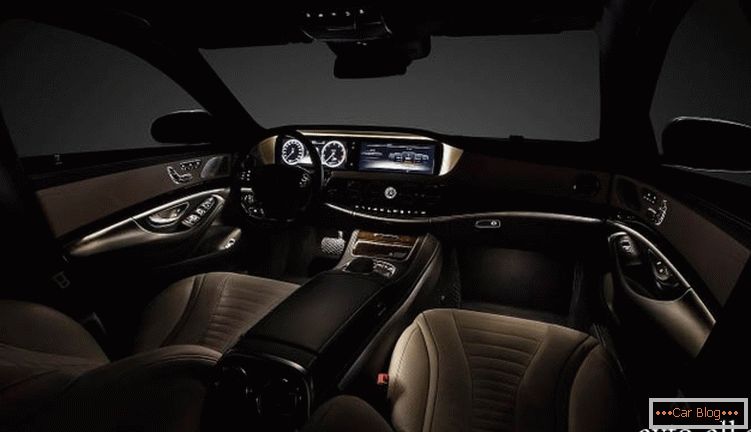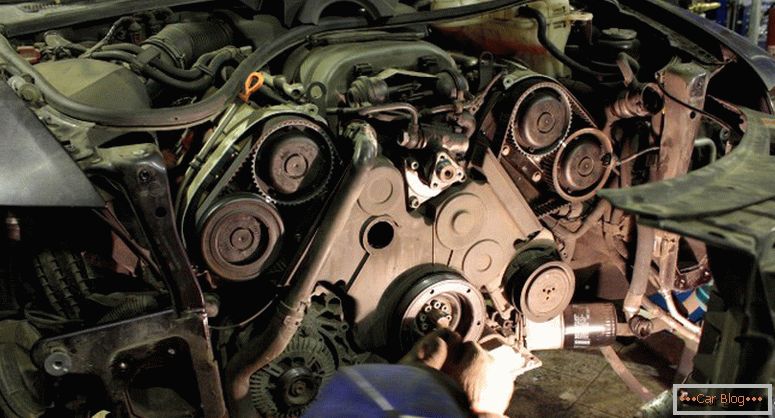Toward the middle of the 60s, a situation developed in the Soviet planning-command economic system, when the gap between the amount of money in the hands of the population and their provision of consumer goods reached threatening size, which promised the state and its hard currency very unpleasant consequences. Massive and affordable car could significantly improve the situation, becoming the “vacuum cleaner” that would pull out their savings from citizens and correct them, threatening serious inflation, with a financial and economic list. In addition, a modern car brand with a good demand abroad could significantly improve the export commodity-nomenclature positions of the Soviet Union and ensure the inflow of fresh foreign exchange earnings.
And in 1966, at the highest governmental and party level, the decision was made to purchase a car from the capitalists along with the plant, and also on credit. The idea, of course, was original and large-scale in full accordance with the flight of thought of the Kremlin inhabitants of heaven. Here are just a quick return of money could only be due to the export of those same cars. And selling to foreign consumers copies of cars they know is much easier than bringing an unknown Soviet model to the market.
 In addition, the development of a new car takes at least five to six years. During this time, the loan will acquire such juicy and weighty interest that the commercial feasibility of the enterprise may be in doubt. Therefore, they decided to buy a ready-made model that does not require additional technical developments. The choice of the nationwide automobile of the victorious socialism was entrusted to the specialists of the Scientific Automotive Institute (NAMI).
In addition, the development of a new car takes at least five to six years. During this time, the loan will acquire such juicy and weighty interest that the commercial feasibility of the enterprise may be in doubt. Therefore, they decided to buy a ready-made model that does not require additional technical developments. The choice of the nationwide automobile of the victorious socialism was entrusted to the specialists of the Scientific Automotive Institute (NAMI).
Выбор партии - откуда скопировать будущую Lada
At first there were three candidates: Ford, Peugeot and Renault. But high-ranking comrades from the industrial department of the Communist Party Central Committee strongly recommended to look at the Italian Fiat-124, which won the honorary title of "Miss car" in 1966. At that time, it was a highly spectacular machine with a sophisticated aristocratic appearance and excellent technical parameters by the standards of the Old World.
At Fiat-124 and the choice of NAMI specialists was stopped. But the very first kilometers of the Dmitrov landfill brought down the gloss with the Italian beauty. Soviet testers could not believe their eyes: and this is the best car in Europe ?! The vaunted "Italian", unable to withstand the ordeal of domestic roads, began to fall apart just before our eyes! Two months later, all that was left of him was bagged and sent back to the sunny Apennines. Absolutely everything fell down: the power unit, chassis, body literally crawled along the seams like a rotten quilted jacket. But all attempts to convince the curators of the industrial department of the Central Committee to refuse to buy the Italian supercar personally stopped Leonid Ilyich, who categorically stated: we will take this particular car. And all the flaws and inaccuracies had to be corrected by NAMI staff.
Porridge from the ax - prepare a Lada from Fiat
Everything turned out as in the famous fairy tale "Porridge from an Ax", where various ingredients and seasonings were added to the inedible cleaver, as a result of which a completely decent product was obtained. The same thing happened with Fiat-124. Russian engineers for a year and a half have completed a huge amount of work, forcing the Italians almost completely redo the car. On the updated Fiat, a new engine was introduced, the brake system was modernized, and the body of increased rigidity was made of better materials. In addition, hundreds of design changes and technical innovations have been made to the parts and components of the car. Of the external differences can be noted the emergence of new recessed safety door handles, more massive fangs of the bumper and a company emblem that no longer had anything to do with Fiat - stylized under the letter "B". Thus, the Italians, with the brains and hands of Russian engineers from NAMI, created an almost new car. True, at first, Fiat’s designers were quite cool and even somewhat dismissive about the attitude to the Soviet engineering thought: they say that these Russians can offer a practical one.
Recommended article: Tuning of the cabin VAZ 21214 - do-it-yourself cabin comfort "Niva"
But soon the Italians were convinced that Soviet experts were giving extremely useful advice. As a result, a completely reworked "one hundred twenty-fourth" model, having absorbed numerous Russian rational proposals, began to be produced in the shops of the Spanish branch of the Fiat concern without any dividends in favor of the Soviet participants in its design. That was such a clumsy interstate technical integration. Since the contract did not stipulate that the work of NAMI engineers should be paid separately, they had to work for the benefit of the Fatherland purely for ideological reasons.
But on the other hand, the Italians sometimes forgot to bring in the agreed-upon improvements to the design of the Soviet machine. Whether the game on the name Fiat-124 cost such an expensive dressing is still a controversial issue for automotive historians. After all, there were other quite worthy candidates for the role of the Soviet people's car. The extended circle of applicants in the amount of seven samples of various foreign automakers was tested on the highways of the Dmitrov landfill.
Product of the century - Reno or Fiat?
An interesting fact is that the best technical characteristics were shown not by the Fiat-124, but by the Renault-16, which was strikingly different from the Italian supercar both in appearance and in technical solutions. Its main advantage was the design of the front-wheel drive, which gave superiority in handling. Renault by all experts was unanimously recognized as a more promising model than Fiat. But here politics won out over technical expediency.
The special relations of the Soviet leadership with the Italian Communist Party put an end to the promising French model, which, however, still take its revenge. But more on that below. In the meantime, through the foreign intelligence channels of the KGB, outright misinformation about successful negotiations with the French automaker was launched, designed to make the Italians more compliant and compliant. And it really scared them - they could not allow the breakdown of such a tasty deal. As a result of this operative game, the Italians lowered the loan rate to a meager 5.6% per annum. The deal of the century took place.
Recommended article: New Oka looks in a new way and in a new price.The construction of a giant automobile plant went at an accelerated pace. In the unfinished workshops, engineering departments and technical services were already deployed, installation of conveyor lines and necessary equipment continued almost around the clock. The purpose of this haste was the release of the first car by the twenty-second of April 1970, when all progressive humanity in a single ideological impulse will celebrate the centenary of the great leader of the world proletariat. In this regard, even going to give the car the name VIL-100. For the history preserved and the corresponding emblems that were supposed to decorate the new Soviet car. But ultimately, such a decision was recognized as ideologically unsatisfied and was immediately abandoned.
The first swallow - a penny VAZ-2101
Interest in the new Soviet car was truly huge. Domestic motorists in the old good chauffera tradition, first of all, sought out in him flaws compared to the usual "Moskvich." Initially, in the newly-made “Zhiguli”, literally everything was not pleasant. For example, according to the rules of the Soviet standardization, domestic cars were equipped with wrenches for 12 and 16. And in the driver's kit of the Togliatti novelty, the key for 13 absolutely unexpectedly showed up! Devilry some! Yes, and wiper blades were removed from the leashes with a flick of the wrist. This is a generous gift to any rogue who, in spite of official propaganda in the USSR, was still abundant. In addition, the hot controversy caused the name of the car, too consonant with the French word Zuhlter, which means “pimp”. Of course, under the name of the car to sell abroad was impossible. As for domestic buyers, not every citizen of the Soviet state spoke the language of Eugène Xiu and Victor Hugo.
In the people, the first Togliatti model was soon called “unity” by the last digit of the factory VAZ-2101 index. And for export, the Volga cars left under the romantic Old Slavic name "Lada", which was very nice and concise. Soon, some concerns about the power of the Togliatti firstborn were dispelled. With its 64 horses, the VAZ-2101 turned out to be much more dynamic than the 75-strong Moskvich, its main technological opponent in the Soviet Union.
In the seventies, “edinichka” and its numerous descendants were quite competitive even in the Western European car markets. And in the socialist countries "Lada" in general were a huge deficit, the subject of desire and luxury. For example, in the GDR to get the coveted Volga car needed to stand in line for about eight - ten years.
The mass of technical innovations and innovations in the Land of the Soviets was first introduced precisely in VAZ vehicles. The disc brake system up to "edinichki" was practically not used in passenger cars. And on the car with the “2103” index, the vacuum booster brake mechanism and tachometer were already installed, which was a technological revelation for those times.
In the eightieth, on the "five" - the first Volga car with fully updated body contours - a motor with a belt drive system, block headlights, arranged with side lighting and turn indicators were installed. And in 1982 on the model with the index "2107" appeared anatomical chairs, equipped with built-in head restraints.
Recommended article: Specifications Ford Focus 2, depending on the configuration of differentStages of the big way
The correspondence technological confrontation between AZLK and VAZ was vividly played in the fiery comedy by Eldar Ryazanov “The Incredible Adventures of Italians in Russia”, where the adventurous motor rally from Moscow to Leningrad ended with a convincing victory for “Zhiguli”. By the way, “treshka” has already been shot here - a more powerful luxury model of the Volga Automobile Plant with the “2103” index. She became on the conveyor in 1972. A year earlier, AvtoVAZ began production of the Zhiguli-Combi, the dreams of summer residents, fishermen and tourists.
Little by little, the Togliatti automobile plant went to the design mode of production. Millionth copy off the assembly line in less than three years after the launch of the enterprise. And already in the eightieth they welcomed the five millionth "Lada". Not a single Soviet automaker could have dreamed of such volumes. But unfortunately, the law formulated by Engels on the transfer of quantity to quality on the territory of the Volga Automobile Plant unexpectedly misfired. This happened mainly due to the fact that over time they began to deviate from the approved technological standards, the production culture decreased, and the materials that were used were not the ones that were required. For the first samples of the Zhiguli, most of the components and important assemblies were supplied from Italy, therefore the typical Soviet sloppiness and traditional thefts in the enterprise were not so noticeable.
And yet, despite this, the Volga Automobile Plant produced the best cars in the country. And the glory of "Zhiguli" of the first years of release was nullified by an unreasonably long stay on the conveyor. All of the above was the reason that by the end of the eighties there was a serious technical gap between Togliatti cars and foreign competitors. Against the background of their classmates, the once successful and successful brand looked like a newcomer from the past, a relic of a bygone era.
Cabin cramping, low engine power, poor braking system, camshaft subject to frequent breakdowns ... Carburettor power units also ceased to comply with stricter European environmental standards. All this was significantly aggravated by the drop in the quality of components and the assembly level.
The last “Lada” with the factory index “2107” left the assembly line in the summer of 2012. The history of Volga cars, once the symbol of the technical power of the USSR, is over. Now the spacious workshops of the Volga Automobile Plant produce cars with a diamond "Renault". Three-quarters of VAZ shares belong to the same French auto giant. Forty years later, revenge took place ...



